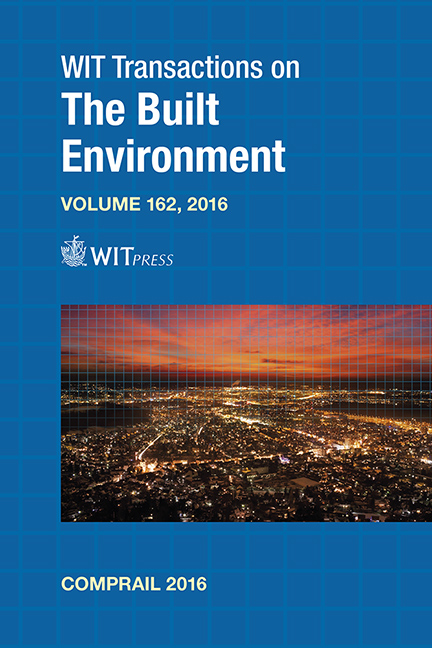Slag Aggregates For Railway Track Bed Layers: Monitoring And Maintenance
Price
Free (open access)
Transaction
Volume
162
Pages
12
Page Range
283 - 294
Published
2016
Size
1,124 kb
Paper DOI
10.2495/CR160261
Copyright
WIT Press
Author(s)
M. Morata, C. Saborido, V. Fontserè
Abstract
The use of aggregates with high abrasion resistance is key to guaranteeing a good track performance during time. However, obtaining these high-quality aggregates is not always feasible at a reasonable cost. Because of this, the creation of new alternatives with lower life cycle costs and lower environmental impact, such as SFS-Rail (steel furnace slag-rail), is fundamental for the economic and environmental sustainability of the railway infrastructure. SFS-Rail is made of recycled aggregates from electric arc furnace slag aimed to be used in subgrade and subballast layers and that offers excellent physical and mechanical properties.
In this paper, a worldwide review of the state-of-the-art experiences and legislation in using ferrous slag in railway applications is carried out. Next, an introduction of SFS-Rail and their main benefits in terms of track performance and environmental sustainability is made based on both laboratory tests and a life cycle assessment (LCA). Results from laboratory tests are compared to existing European norms regulating the use of aggregates in track bed layers to prove their suitability. The field tests undergone under the LIFE+ GAIN project in a mixed line (passenger and freight) of the Spanish infrastructure manager (ADIF) network are described. The extensive monitoring equipment to monitor SFS-Rail effect on track performance and the main results of the monitoring activities are shown, demonstrating the suitability of SFS-Rail in track bed layers and its contribution towards an enhanced abrasion resistance, track stability and durability, reducing the need of maintenance operations.
Keywords
slag, aggregate, railway, foundation, track bed





